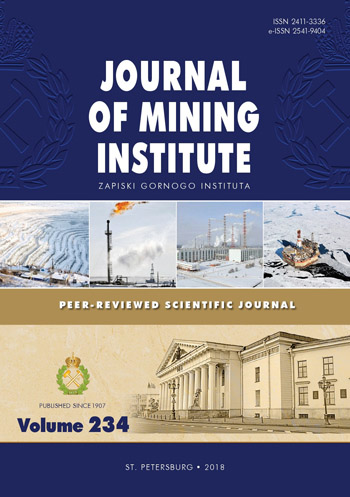Causes of fluid entry absence when developing wells of small deposits (on the example of Khadum-Batalpashinsky horizon)
- Ph.D., Dr.Sci. First Deputy General Director JSC «SevKavNIPIgaz»
Abstract
A promising direction for the development of the oil and gas industry is the drilling of small hydrocarbon fields, which constitute two thirds of Russia's total hydrocarbon reserves. When choosing an effective method of development and assessing the potential of small fields in Eastern Ciscaucasia, which are characterized by complex mining and geological conditions with abnormally high reservoir pressures and temperatures, it is necessary to determine the optimal amount of oil production taking into account the flow of edge water under elastic water drive. The article discusses the reasons for the lack of inflows of reservoir fluids in wells during their development, which are due to complex unconventional fractured clay reservoirs in the lower Maykop deposit and the presence of loose rocks in the section of the reservoir. The results of studies of the influence of technological and geological factors on the poroperm properties of the Khadum-Batalpashinsky reservoir are described, zones of rock softening are revealed, the intervals with bottom water and their influence on the well development process are specified. It has been established that the state of the hydrodynamic system of the field depends on the introduction of the bottom and edge waters of the sedimentation basin of the East Stavropol Depression. Oil deposits in the Khadum and Batalpashinskaya suites initially work in an elastic and then in an elastic-water drive mode. The main reasons for the lack of inflows of formation fluids into wells are the low reservoir properties of clay fractured reservoir rocks; clogging of the fracture capacity of reservoir rocks at the drilling in as a result of penetration of drilling mud and its filtrate deep into the reservoir; inflow of formation water from an overlying aquifer with abnormally high formation pressure; the closure of cracks in the clay reservoir due to a sharp decrease in pressure caused by the lowering of the slotted filter into the well; secondary dissection of productive layers by perforation during repression on the formation in a liquid medium with the presence of a solid phase and high density.
